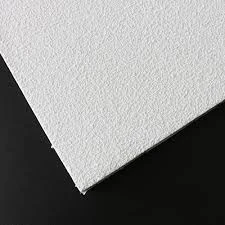- Afrikaans
- Albanian
- Amharic
- Arabic
- Armenian
- Azerbaijani
- Basque
- Belarusian
- Bengali
- Bosnian
- Bulgarian
- Catalan
- Cebuano
- Corsican
- Croatian
- Czech
- Danish
- Dutch
- English
- Esperanto
- Estonian
- French
- German
- Greek
- Hindi
- Indonesian
- irish
- Italian
- Japanese
- Korean
- Lao
- Malay
- Myanmar
- Norwegian
- Norwegian
- Polish
- Portuguese
- Romanian
- Russian
- Serbian
- Spanish
- Swedish
- Thai
- Turkish
- Ukrainian
- Uzbek
- Vietnamese
Αυγ . 17, 2024 23:28 Back to list
Exploring the Benefits of PVC Grid Ceiling Tiles for Modern Interiors
Exploring PVC Grid Ceiling Tiles Benefits and Applications
When it comes to interior design and construction, ceiling tiles play a pivotal role in enhancing both the aesthetic appeal and functionality of a space. Among the various options available, PVC (Polyvinyl Chloride) grid ceiling tiles have emerged as a popular choice for homeowners, businesses, and contractors alike. This article delves into the unique advantages of PVC grid ceiling tiles and their diverse applications.
What Are PVC Grid Ceiling Tiles?
PVC grid ceiling tiles are constructed from lightweight, durable polyvinyl chloride, a synthetic plastic polymer. They are designed to fit into a standard grid system, making installation straightforward and efficient. The tiles come in various designs, colors, and finishes, allowing for extensive customization to suit any interior décor style.
Key Advantages of PVC Grid Ceiling Tiles
1. Durability and Longevity One of the standout features of PVC grid ceiling tiles is their remarkable durability. Unlike traditional materials such as plaster or wood, PVC is resistant to moisture, mold, and mildew. This makes it an excellent option for areas prone to high humidity, such as bathrooms, kitchens, and basements. Additionally, PVC ceiling tiles do not warp or crack over time, ensuring a long-lasting solution for ceilings.
2. Ease of Installation Installing PVC grid ceiling tiles is a relatively simple process, requiring minimal tools and expertise. The tiles can be cut to fit any space, and because they are lightweight, they reduce the burden on the ceiling structure. Homeowners and contractors can save significant time and labor costs during the installation process, making it an attractive option for renovation projects.
3. Low Maintenance Maintenance is often a concern with any interior surface, but PVC grid ceiling tiles excel in this area. They are easy to clean with just soap and water, and their resistance to stains means that they can maintain their appearance without frequent replacement. This low-maintenance requirement is especially advantageous for commercial spaces that demand a clean and professional look.
pvc grid ceiling tiles

4. Aesthetic Flexibility PVC ceiling tiles come in a vast array of designs, colors, and patterns. From classic metallic finishes to modern geometric designs, they can complement any interior style, including contemporary, industrial, and traditional settings. This aesthetic flexibility allows interior designers and homeowners to express their creativity while enhancing the overall décor.
5. Sound Absorption Another benefit of PVC grid ceiling tiles is their ability to absorb sound, making them suitable for environments where noise reduction is a priority. This property is particularly valuable in offices, schools, and healthcare facilities, where a peaceful ambiance can enhance productivity and comfort.
Applications of PVC Grid Ceiling Tiles
The versatility of PVC grid ceiling tiles enables their application across various settings. In residential spaces, they are commonly used in living rooms, kitchens, and home theaters, providing a seamless design element. In commercial environments, these tiles are ideal for offices, retail stores, and restaurants, where a combination of aesthetics and functionality is crucial.
In industrial settings, PVC ceiling tiles may be used in warehouses and manufacturing facilities, offering an attractive solution while resisting the harsh conditions often found in such environments. Additionally, their fire-resistant properties meet safety regulations, making them suitable for use in public buildings.
Conclusion
In summary, PVC grid ceiling tiles offer a compelling combination of durability, aesthetic appeal, and practical benefits, making them an excellent choice for various applications. Whether you are renovating your home or designing a commercial space, considering PVC ceiling tiles can provide both functional advantages and a unique visual element that enhances the overall ambiance. Embracing this innovative ceiling solution can transform ordinary spaces into extraordinary environments.
-
PVC Laminated Gypsum Ceiling Board OverviewNewsApr.11,2025
-
Mineral Fiber Ceiling Tiles Price Analysis and ComparisonsNewsApr.11,2025
-
Crafts of Mineral Fiber Ceiling Tile ManufacturingNewsApr.11,2025
-
Difference Between Gypsum and PVC CeilingNewsApr.11,2025
-
An Overview of Mineral Fiber Ceiling TilesNewsApr.11,2025
-
Advantages of PVC Gypsum CeilingNewsApr.08,2025







